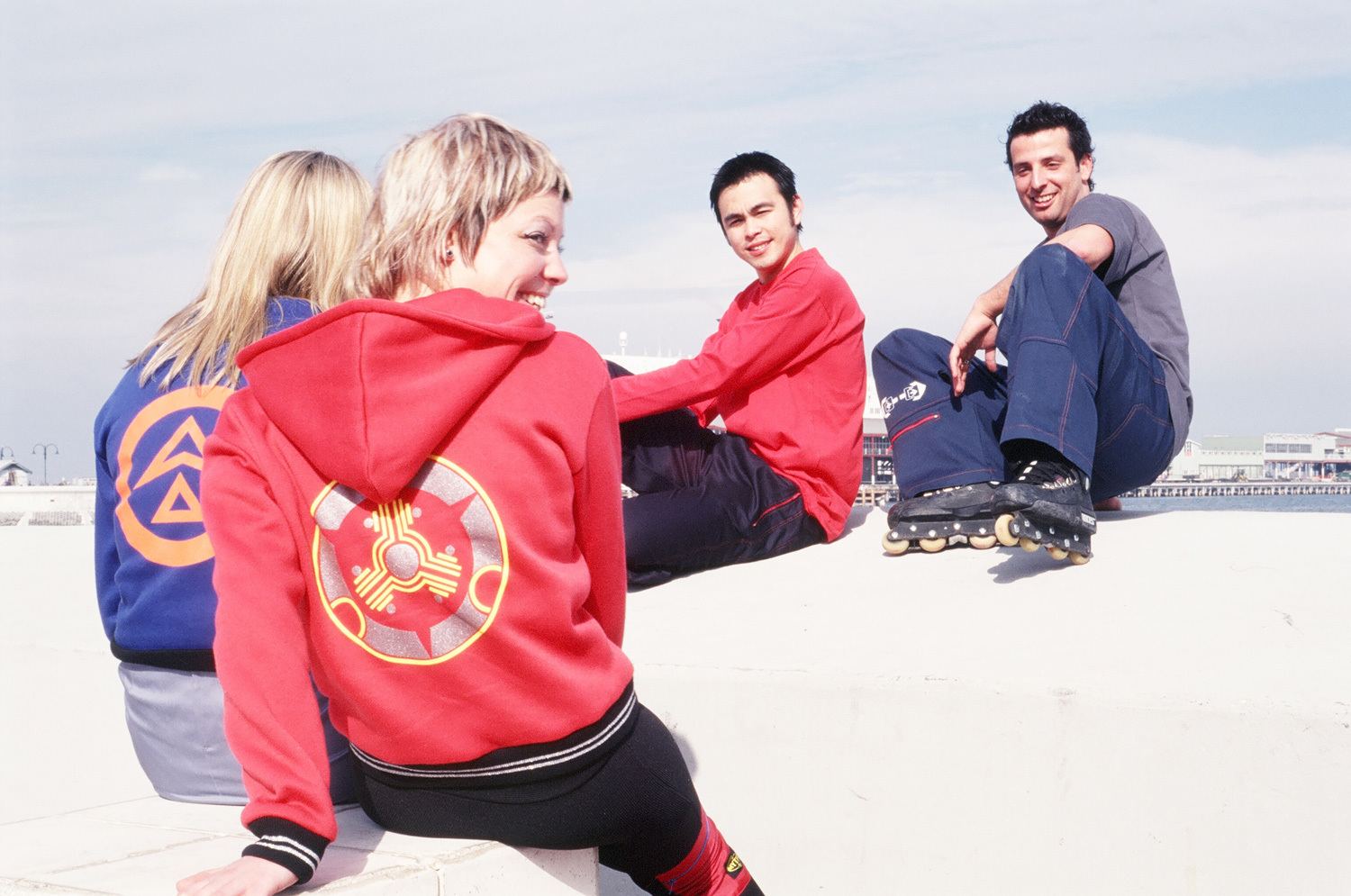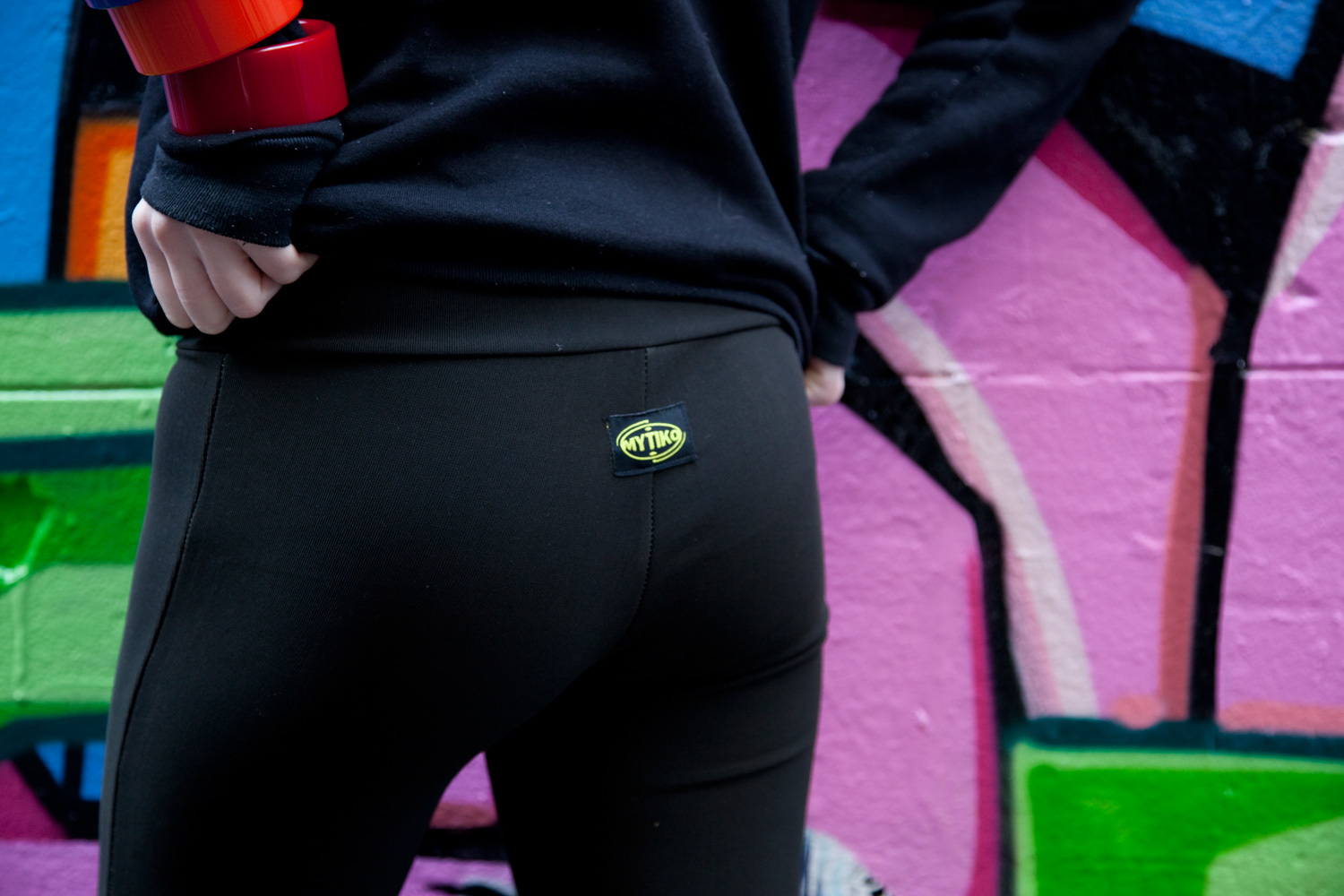In the 20 years since Melbourne label Mytiko launched, they’ve held a special place in the city’s fashion memory. Originally popular with underground techno scenesters, the brand became famous-or infamous-when it was adopted as an Australian mallrat staple. As we’ve reflected, they were “very tight, very flared, and worn very low-to show off your belly ring.” You’d see them paired with USA jumpers and adidas shell toes. But despite their omnipresence in the early 2000s they’ve since faded from view.
But while they were out of sight, for those of us who slid into them-or begged our parents for a pair-they weren’t out of mind. To revisit our food court hopping youth, we caught up with the label’s enigmatic designer Theresa Muscat about her brand’s place in shaping the country’s adolescent style.
It’s been a long time since you launched Mytiko. Tell us a bit about how it all started.
When I was a teenager, a good friend was a rapper and he would perform hip-hop gigs at the city square. He’d play the most amazing hip-hop and collected tracksuits and sneakers from New York. I was really influenced by that scene, and being around breakers and graffiti artists. From there I went on to study fashion marketing, and there was such a raw creative energy in the early 90s in Melbourne.
I feel like the brand was often tied in the the techno scene at the time.
Being around the techno scene was really important. I started producing these choreographed fashion club shows where I’d work with local DJs. I was just in this music fashion wonderland – making clothes and producing fashion shows at raves. I was booked to do shows all around Melbourne and I started to get a name for myself. I was also a presenter for music and fashion show on Channel 31.

It sounds like a very inspiring time to be a creative person in Melbourne.
It really was. I remember one of the first rave nights I went to was at a club called Commerce and they played early techno that nobody had heard of. That was the best part: techno was still so new in the early 90s. It was music like 808 State’s Lift, Orbital’s Chime, The KLF’s What Time Is Love and The Jungle Brothers’ I’ll House You. That whole merging of hip-hop, techno, dance-it was unbelievable. It felt like we were the first kids to hear techno, this new sound. It was this big fusion of creativity, inspiration, dance and music that led me to create Mytiko. There’s this really powerful synergy between music and fashion. When they come together it makes people happy. You have a great time.
Tell me about your launch in 1996.
We launched on Collins Street. It was a little hub of streetwear stores down stairs where people would come to buy clothes and to keep up with what was happening on the weekend. On a Friday night there’d be rave and hip-hop DJs playing in our store. The customers that were coming in were a part of the subculture; they were going to all the raves and dance parties. Everything they bought from Mytiko was to go to these events.
When did the Mytiko pants come about?
In the early days it was more heavily rave vibe, and then I sort of started toning things down to reach a wider market and make the garments more wearable. The pants came from that. For me, what was really special about Mytiko was our loyal customers. We’ve always had such a loyal customer base. I always hear from Mytiko customers today. The pants became a part of their life!

It made them feel connected to something.
Yeah, totally. They have those memories of wearing those sneakers or those pants when they were going out. And the store itself was really memorable – it was dome-shaped and we had great music pumping and all this sci-fi artwork painted on the walls. It was like walking into a spaceship. I’ve still have a drawer full of cassette tapes of DJ mixes from rave festivals.
We’ve talked a lot about the culture around the brand, but was there a conscious strategy too?
I was really focused on being different and having our own vibe. I didn’t want to look like the brand in the next shop. Mytiko had to look like Mytiko. I wanted it to be fresh. It had its own energy and look. People used to think we were from Japan, because we kept it so underground. I never wanted to be the face of the brand; I thought that would confuse the message. It was about creating really high-quality products with beautiful fabrics, and 10 years later those products are still in people’s wardrobes. Those products have stood the test of time. We never had returns. I was obsessed with that idea. I always thought, “If someone’s going to buy something, they should be happy with it.” I just wanted to create high-quality, original products that people loved, and contribute to a culture that I loved, and let it all speak for itself.
Any future plans for Mytiko?
I’m working on a small capsule range inspired by the 90s and would love to produce a small 90s collaboration with a big fashion brand. I have so much in my archives that I think we could do something amazing!
Credits
Text Zac Bayly
Photography courtesy of Mytiko
